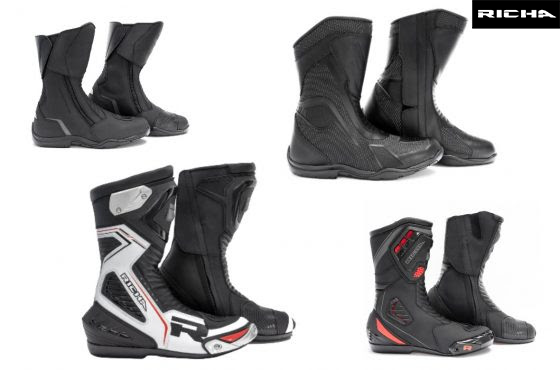Ride Vision release motorcycle safety ‘Collision Avoidance System’
A motorcycle safety system using predictive vision algorithms to anticipate danger on the road will be ready for sale early 2021.

RIDE VISION has been in the pipeline for a few years now, and it’s finally looking like it’s ready for the public. The basic premise is that the aftermarket motorcycle safety device acts as a standalone rider assistance system, alerting the rider to potential danger on the road, so they can take action and hopefully avoid a SMIDSY.
Having raised a total of $10 million - $7 million with a crowd-funding campaign, $2.5 million of private funding, and partnering with industry veterans (including Continental in 2017) - Ride Vision was able to secure their launch ready for both motorcyclists and scooterists.
Not dissimilar to the blind spot alert systems on some newer motorcycles and cars, the system is designed to act as an additional visual cue for the rider to take action. The non-invasive alert system will not automatically apply brakes or alter the ride - it’s still down to the rider to make the necessary adjustments to stay safe.
WATCH Top 10 most watched motorcycles on Visordown
The advanced driver warning system is dubbed Collision Aversion Technology, or CAT, and operates on a dedicated ECU chip powered by the motorcycle/scooter battery, which will also record ride statistics. The drain on the battery is apparently less than charging your phone.
Two HD wide-angle cameras mounted front and rear function as a second set of eyes on the road, relaying data to the ECU which uses algorithms to predict future movements (like magic) giving the rider a de facto 360 degree view of the road by signalling danger with LED lights placed on the rearview mirrors.
The Ride Vision motorcycle safety system provides riders with:
Blind spot alerts, dangerous overtake alerts, general danger alerts, forward collision alerts, and reminders to keep a safe distance from the vehicle in front. More features are planned, including rear collision detection, emergency call capability, and “fun video clip editor”.

The mounted cameras can also serve a second purpose, as they can record your ride similarly to an action-camera or dash-cam - this could be for insurance purposes, or for a personal keepsake of a memorable ride.
Like any good tech accessory, the device can be paired with the dedicated app to make adjustments or access ride data. Plus it can be fitted to basically every motorcycle or scooter, so if you want the additional eyes on the road it can be arranged.
Are there any insurance benefits for fitting the Ride Vision system, like a reduction in premium?
Well, not for the UK as it stands - but that doesn’t mean it has no benefit. Whilst the obvious point is it’ll help prevent accidents, and increase motorcycle safety, by increasing the riders' awareness of hazards - the action-cams fitted to the device will absolutely help when determining liability for an insurance claim. Some insurers in the UK may discount a premium if they are notified of your dash-cam/action-cam when setting up, so it’s worth a mention.
How much is it?
Expect to pay around £250-£300, which is the equivalent price of a decent action camera without the ECU and active alert system. But the price is yet to be officially confirmed on their website.

